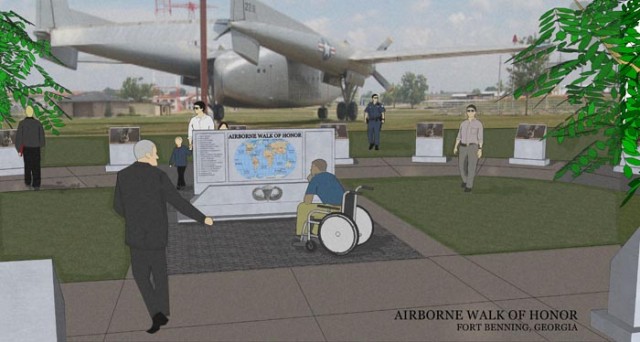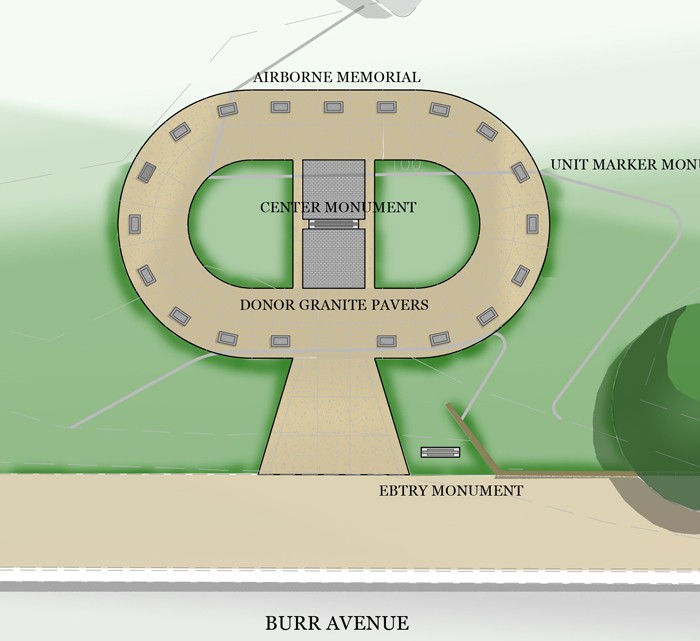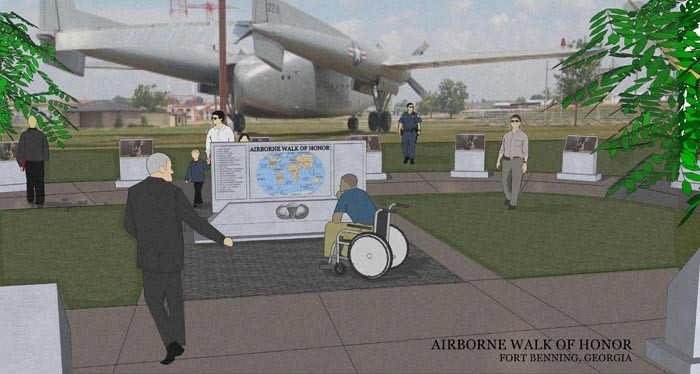FORT BENNING, Ga. -- A new monument dedicated to U.S. combat paratrooper and glider units is sprouting up on Eubanks Field here.
Ground was broken earlier this month on the Airborne Battle Memorial, which will sit just 100 feet from the Airborne Walk at the Army Airborne School. An opening ceremony is scheduled for April 8, to coincide with the annual Airborne Awards Festival.
Ed Howard, vice president of the Airborne Historical Association, said the display commemorates all the American units that fought in Airborne battles - from Operation Torch in 1942 during World War II to Operation Northern Delay in Iraq eight years ago.
Only assaults at the battalion level and above will be represented. Eighteen are large enough to qualify, plus an extra monument placed to honor other military Special Forces and intelligence units that jumped covertly in smaller groups between World War II and the present.
While the Airborne Walk is set up to recognize units, this pays tribute to the battles, he said.
"It's a living memorial. It's dynamic," Howard said. "Every time there's another combat Airborne assault, we'll add another monument."
The $112,000 project has been in planning stages since 2003, he said. It encountered several work stoppages, including a Department of Defense moratorium on monuments at military installations that was lifted a couple of years ago. Lt. Col. Aidis Zunde, then the 1st Battalion (Airborne), 507th Parachute Infantry Regiment commander, floated the idea for the Airborne Battle Memorial to Don Lassen, president of the Airborne Historical Association.
Lassen fought in World War II as a paratrooper, started a newsletter that would become The Static Line Magazine and founded the AHA in 1980.
"Unfortunately, he passed away in 2008 before he could see it come to fruition, but he ran with the idea for this particular monument," Howard said. "Without him, this wouldn't be happening. He was the driving force behind everything."
The exhibit's platform is shaped like the oval worn behind the parachutist's wings, with a global map in the center marking the sites of every major parachute combat assault involving U.S. Airborne Soldiers. It'll be surrounded by the 19 white-granite monuments, each standing 42 inches high and 30 inches wide, listing the unit names, dates, place of battle, and number of jumpers or glidermen - about 72,000 total.
"Even though I've spent years researching this thing, I still find it to be a staggering number of jumpers," Howard said. "We felt a huge obligation to satisfy everyone's desire for accuracy. People have a need to see their unit represented."
Gliders were mainly used for dropping equipment. In World War II, however, troops rode them directly onto the battlefield. The gliders worked in conjunction with parachute troop deployment to land heavy equipment and additional Soldiers.
"It was extremely dangerous, and according to many, even more so than regular parachute jumping," he said. "The troops arrived into combat by both, and that's what this monument is dedicated to. It's an exclusive club. This is as much about the means of arrival as it is the battle itself."
The 1st Battalion (Airborne), 507th Parachute Infantry Regiment, will coordinate the memorial's unveiling this spring.
"We're really excited about the opportunity to have such a great monument placed in our training area," said Lt. Col. Bob Risdon, the unit's executive officer. "We know it represents a lot of men and women who have done many courageous things for our country in the name of freedom. We are pleased to have it in our training area for people to view, enjoy and hopefully better understand all the history behind the monuments."
The AHA built the Airborne Walk in 1986 and has managed it ever since. The nonprofit organization is funding the Airborne Battle Memorial through donations and sales of personalized pavers, which are planned for the exhibit's central area.




Social Sharing